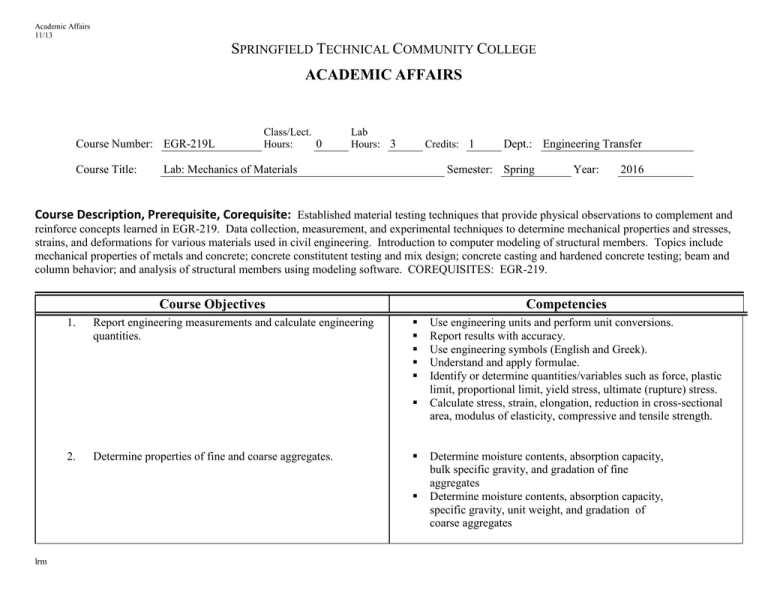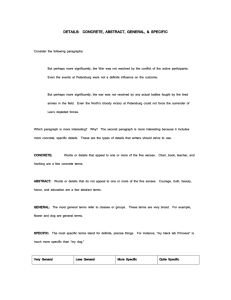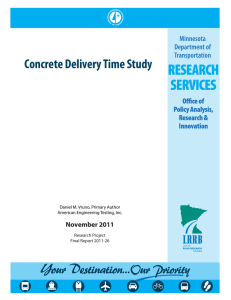EGR-219L - Springfield Technical Community College
advertisement

Academic Affairs 11/13 SPRINGFIELD TECHNICAL COMMUNITY COLLEGE ACADEMIC AFFAIRS Course Number: EGR-219L Course Title: Class/Lect. 0 Hours: Lab Hours: 3 Credits: 1 Lab: Mechanics of Materials Dept.: Engineering Transfer Semester: Spring Year: 2016 Course Description, Prerequisite, Corequisite: Established material testing techniques that provide physical observations to complement and reinforce concepts learned in EGR-219. Data collection, measurement, and experimental techniques to determine mechanical properties and stresses, strains, and deformations for various materials used in civil engineering. Introduction to computer modeling of structural members. Topics include mechanical properties of metals and concrete; concrete constitutent testing and mix design; concrete casting and hardened concrete testing; beam and column behavior; and analysis of structural members using modeling software. COREQUISITES: EGR-219. Course Objectives 1. Report engineering measurements and calculate engineering quantities. Competencies 2. Determine properties of fine and coarse aggregates. lrm Use engineering units and perform unit conversions. Report results with accuracy. Use engineering symbols (English and Greek). Understand and apply formulae. Identify or determine quantities/variables such as force, plastic limit, proportional limit, yield stress, ultimate (rupture) stress. Calculate stress, strain, elongation, reduction in cross-sectional area, modulus of elasticity, compressive and tensile strength. Determine moisture contents, absorption capacity, bulk specific gravity, and gradation of fine aggregates Determine moisture contents, absorption capacity, specific gravity, unit weight, and gradation of coarse aggregates Course Objectives 3. Mix and test freshly mixed concrete and prepare samples for strength testing. Competencies 4. Perform strength testing of hardened concrete. 5. Perform tension testing of engineering materials. 6. 7. Perform simple analyses of structural members using SAP 2000 and MATLAB. Prepare technical letters and engineering reports. Proporation a concrete mix design to meet specific deisgn parameters. Mix and test freshly mixed concrete for slump, air content, and unit weight. Make and cure concrete beam and cylinder specimens. Perform early strength testing on hardened concrete cylinders. Estimate 28-day concrete strength. Perform compressive strength test on cylinders. Perform splitting tensile strength test on cylinders. Perform flexural strength test (3-pt bending) on beam. Perform tension testing of metals—cast iron, steel, aluminum, and brass. Perform tension testing of plastics. Develop simple structural models using modeling software SAP2000 and MATLAB. Determine normal and shear stresses. Determine shear and bending moment diagrams. Determine principal stresses. Report testing results in technical letters. Report testing results in full engineering reports. CRITICAL THINKING: Analysis of testing results. Course Objectives Competencies Analysis of stress-strain curves for modulus, yield, and strength and other mechanical properties. Comparison of mechanical properties of different structural materials. WRITTEN/ORAL COMMUNCIATION: Technical report writing, to include executive summary, introduction, materials, methods of investigation, presentation and discussion of results, summary and conclusions, references, appendices, graphs, tables, figures, and images. Technical letter/memo writing including including graphs, tables, figures, and/or images. QUANTITATIVE REASONING: Accurate lab measurements and collection of raw data. Unit conversions. Proportion a concrete mix design. Calculate mechanical properties of materials from laboratory data. Calculate stress, strain, bending moments, and buckling load. COMPUTER LITERACY: Computer modeling of structural members. Spreadsheet applications and formatting. Operate a data acquisition system INFORMATION LITERACY: Use of technical/professional tables and resources such as UCSC soil classification system and American Society for Testing and Materials (ASTM).








